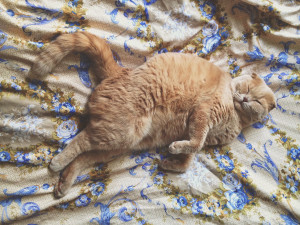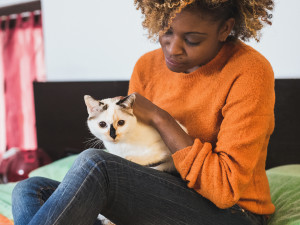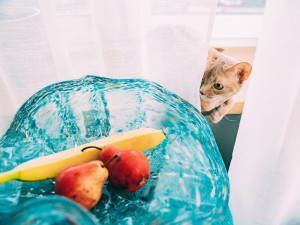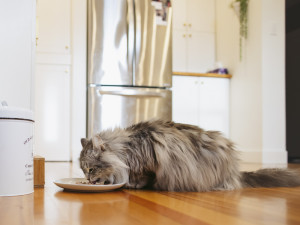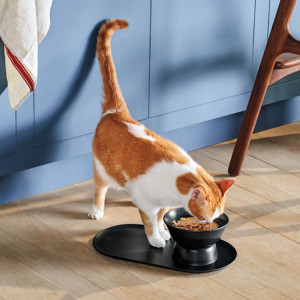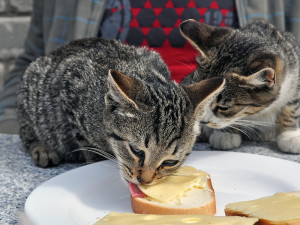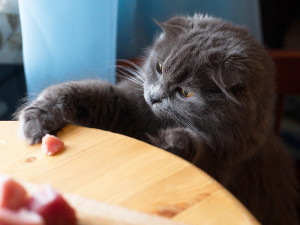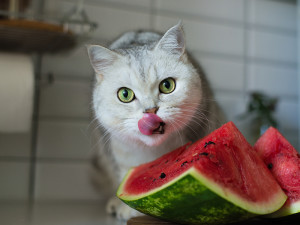How Many Treats Is Too Many For Your Cat?
Despite what your cat thinks, jerky treats all day, every day, is not the answer.
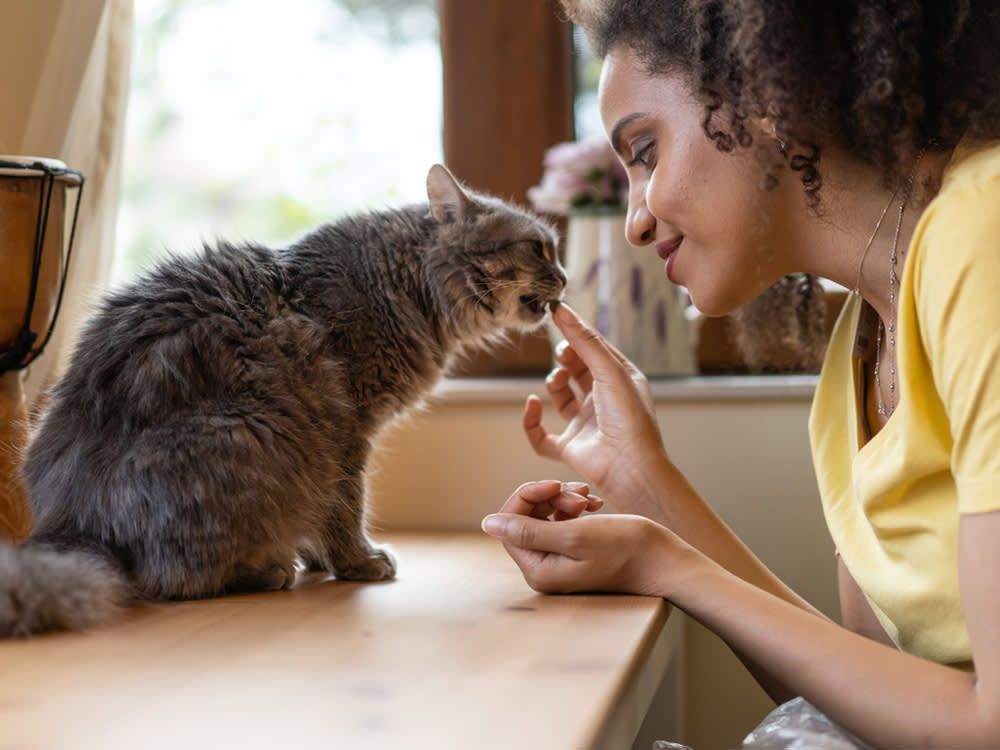
Share Article
As a cat parent, you can likely rattle off a list of reasons your cat deserves a treat. Being nice to the dog, not scratching the couch, leaving the dead mouse outside instead of in your bed, and sleeping in an extra adorable position are just a few treat-worthy behaviors. The challenge facing pet parents is determining how many treats they can get away with giving their cat without compromising their overall health. For some handy tips, Kinship consulted veterinarian and friend to all felines, Dr. Annette Louviere.
Breakdown the Calories
“Generally speaking, treats should make up no more than 10 percent of your cat’s daily calories,” Dr. Louviere says. “Partnering with your veterinarian to determine your cat’s ideal calorie intake can help you eliminate the guesswork on food portioning.”
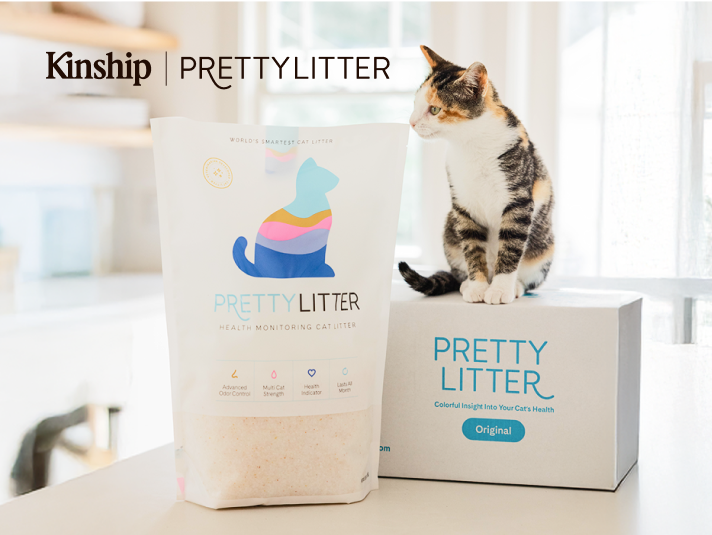
Save on the litter with color-changing tech that helps you better care for your cat.
Once you determine your cat’s daily calories, it’s time to break out the calculator. Let’s look at an example. Say your cat needs 200 calories a day. Ten percent of 200 is 20. That means your cat can get 180 calories from their regular diet and 20 calories from treats each day. You can use the calories-per-cup guidelines on the back of your cat’s food to figure out their meal portions. Packaged treats will offer similar calorie breakdowns that make calculating daily treats easy. Another option is to offer your cat small amounts of low-calorie people food. Plenty of nutrition-tracking apps and online resources list the calorie content in different foods so you can portion out treats correctly.
Choose Healthy Human Foods For a Tasty Treat
If there’s one thing cats crave, it’s meat. Plain, cooked chicken, turkey, lean beef, and fish will satisfy their carnivorous cravings. Raw meats, though they may contain health benefits, are best avoided to reduce the risk of spreading salmonella, E. coli, or other pathogens.
Other great options for cats are vegetables, such as broccoli, zucchini, cucumber, and green beans. Suitable fruits include cantaloupe (with seeds and rind removed), banana slices, watermelon, apple s, and blueberries are also good options.
Cheese is another food that cats enjoy. This option is best saved for special occasions and should be carefully measured; calories in even a small piece of cheese can add up quickly. Eggs are also an appealing offering — particularly egg whites, which are lower in calories.
Avoid Foods That Are Dangerous to Cats
The calorie count isn’t the only thing to consider when choosing human foods for cat treats. Certain foods are dangerous to cats and can cause everything from tummy upset to death. Foods to avoid include chocolate, garlic, onions, and salty snacks. When in doubt, check a resource, such as ASPCA Poison Controlopens in new tab, before giving your cat any human food.
Keep Your Cat’s Health Risks in Mind
Even foods on the “safe list” can pose a risk if your cat has an underlying medical condition. Food allergies, skin conditions, digestive issues, and other complications can set the parameters for the treats you offer your cat.
“A cat with chronic kidney disease (CKD), for example, should be mindful of protein intake and limit foods high in phosphorus and sodium,” Dr. Louviere says. “So, while deli meat might be a coveted treat for many cats, a cat with CKD should avoid it based on its nutrient profile. Similarly, small amounts of bread may be okay as an occasional treat for most cats, but the high-carbohydrate content isn’t recommended for cats with diabetes mellitus. A better alternative in both scenarios would be a piece of cucumber or zucchini, which have a high water content that is beneficial for cats with these conditions.”
To ensure you’re selecting appropriate treats, partner with your veterinarian to find options that consider your cat’s overall health.
Don’t Forget About Non-Food Treats
The way to your cat’s heart isn’t always through their stomach. There are plenty of other ways to give your cat a special treat.
“Not all cats respond to catnip, but for the ones that do, offering them a favorite catnip toy is a great alternative to food-based treats,” Dr. Louviere says.
Additionally, chin rubs, a new feather toy, or even a cardboard box for napping are all great ways to show your cat some love.
“It’s important to remember why we give our cats treats. They can be a reward for good behavior or a way to show them our affection. You can accomplish those two things in many ways, and your cat will (hopefully) appreciate them all.”

Kate Sheofsky
Kate Sheofsky hails from San Francisco, where she developed a love of writing, Giants baseball, and houses she can’t afford. She currently lives in Portland, OR, and works as a freelance writer and content strategist. When not typing away on her laptop, she enjoys tooling around the city with her two rescue pups searching for tasty food and sunny patios.
Related articles
![A cat eating wet food from a dish in the kitchen.]()
8 Cat Meal Toppers for Finicky Eaters
Tips for improving your cat’s appetite with these tasty add-ons.
![A woman with long dark hair kneeling to feed her Shiba Inu dog from stainless steel dog bowls]()
Some Like It Hot—The Benefits of Warming vs. Cooling Diets
Here’s how certain foods can balance your pet’s energy and even ease their allergies, according to Chinese medicine.
![A cat eating out of a black bowl from the brand, cat person.]()
6 Best Fresh Cat Food Delivery Services That Will Have Your Kitty Purring at Full Volume
It’s like Postmates — but for you spoiled cat.
![Two grey cats eating swiss cheese off of slices of bread while sitting on a table]()
You Should Not Invite Your Cat to Your Fancy Cheese Party
Save the charcuterie for the humans.
![A grey cat reaching for food on a table with its paw.]()
Is It Full Goblin-Mode Behavior for Your Cat to Play with Their Food?
Nope, an animal behaviorist confirms it’s cool.
![White kitten with tongue out next to slices of watermelon]()
Can Cats Eat Watermelon and Watermelon Rind?
Yes, watermelon is a nutritious treat for cats.
